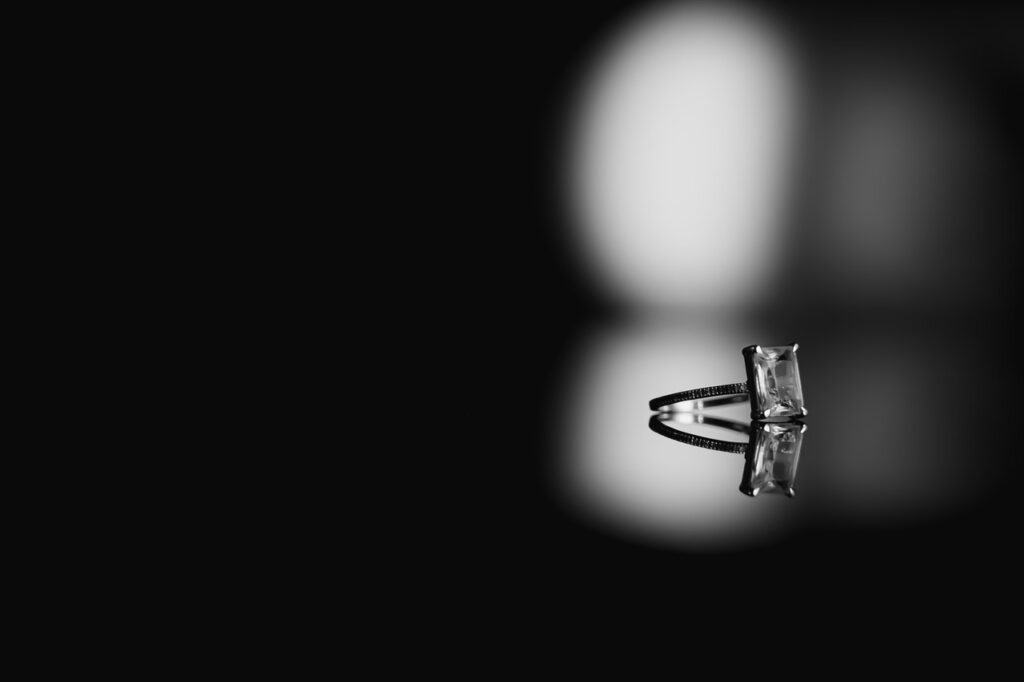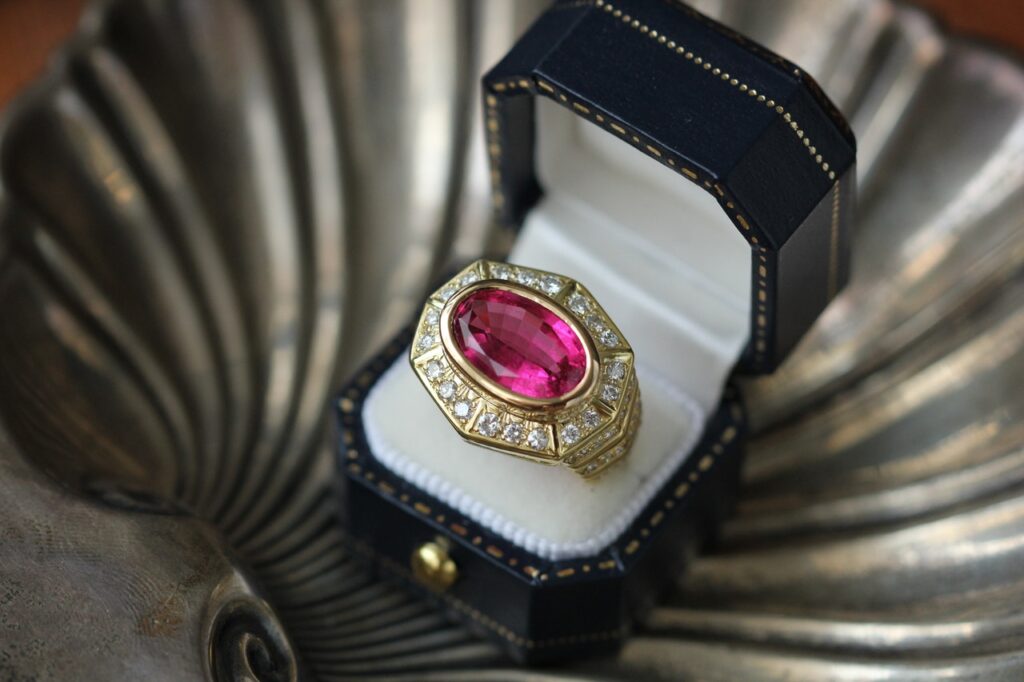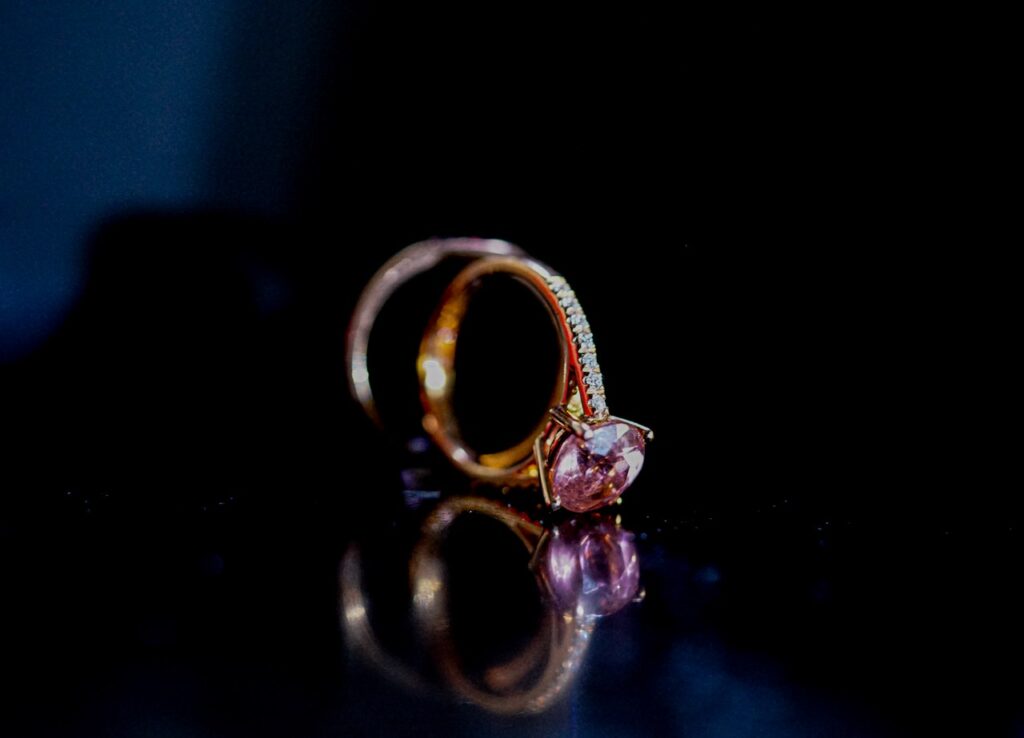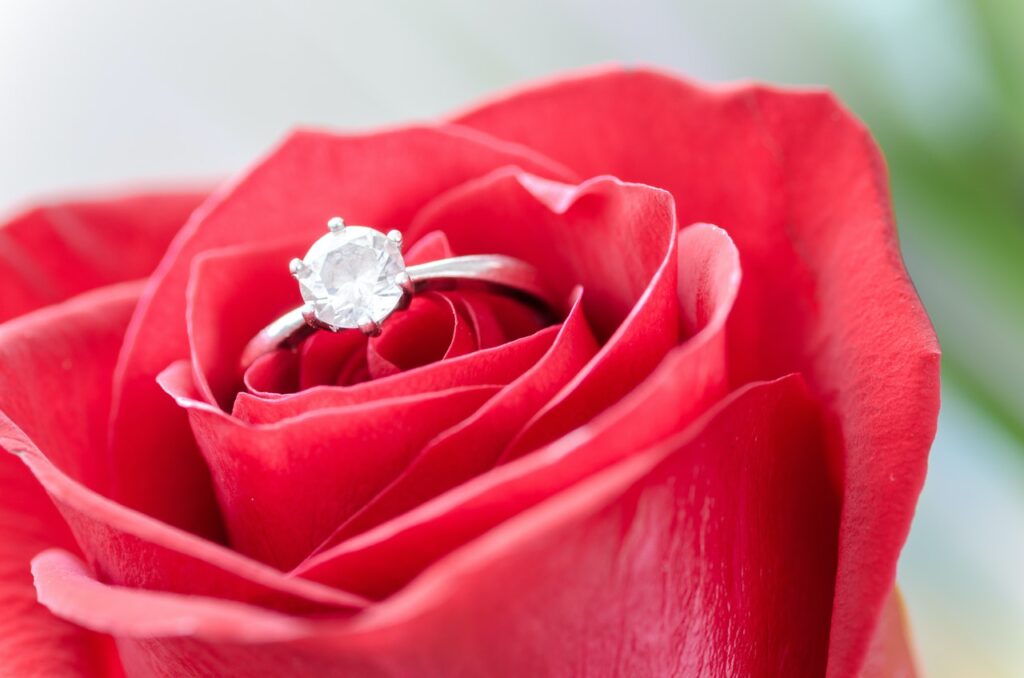Click here to see the table of contents
1. Hardness Scale
When it comes to the kind of gemstone that ought to go into your engagement rings, it is important to select the hardest stones because they are durable and last longer. It is a perfect option if you intend to pass it on to your next generation. If the stone is not very hard, it will shatter or corrode and It is therefore important to stick with these harder rocks as your ideal ring of choice that will withstand the test of time.
You can use the Mohs hardness scale to test the durability and hardness of precious stones, which includes diamonds, moissanite, sapphires, rubies and emeralds among the few with 7-10 rating this stones will make for a good quality ring.
2. Cut and Shape of the Precious Stone

Source: pexels.com
Cut grade refers to the dimension’s angles of the gemstone and evaluates the extent to which a gemstone is well-proportioned and interacts with light. Ideal cut diamond has more brightness, fire and scintillation compared to a low cut graded diamond.
Three major factors for quality cut is:
- Proportions – Ratios and size of the depth of the stone, width and table, taking into consideration the angle and thickness of the sheath of the gemstone.
- Symmetry – precision of a finished gemstone shape and facet placement.
- Polish – overall degree of softness of each facet of the stone and how it affects brightness and luster.
Both shape and cut attributes are important features that improve the authenticity of the stone through the color, clarity and brilliance of the gemstone. The standard representation on engagement rings comes in circular, rectangle, square and oval etc. According to the professionals at ShopEDC, this strongly determines the manner in which the stone will hold firmly to this shape varying on the cut:
- Asscher Cut: A round, square distinguished by a clear X in the stone table, cropped corners and step cut facets to maximize the gem clarity a blend of the emerald and princess cut.
- Baguette cut: A narrow oblong rectangular shape with narrow sides common for smaller stones and a popular design for cocktail rings. This maximizes brightness and luster with long step cuts for a modern and geometric look.
- Cushion cut: The rectangle and the square are common with a crushed ice look and an antique look. Also known as the pillow cut due to the softness of the cut with edges that give out the gems raw appeal that produces sparkle and luster.
- Emerald cut: Commonly known for its beautiful geometrical pattern, with a rectangle shape at the top and trimmed corners some with elongated trapezoids and tapered baguettes set. This helps light bounce brightly on the step cuts.
- Marquise cut: Reflects more light and maximizes on the color depth and spackle. It carries most of its weight in the pointed length to give a look that is higher than the carat weight suggests when compared to other shapes. The cut is generally more expensive than regular cuts for its unique and unusual character.
- Oval cut: Provides brilliance and luster similar to a round diamond. It is among the most difficult with the exception of marquise cuts, with an elongated curve that creates a mirage of a larger gemstone. An ideal engagement ring given its oblong shape.
- Pear cut: Resembling a tear drop the pear cut reflects light beautifully and elevates the color. This type of cut requires a 6 prong setting for additional security. This cut is unique and priced differently.
- Princess cut: A square outline with brilliant facets that produces excellent spackles and retains its rough edges, among the most common and difficult cuts.
- Round cut: Also called round brilliant, it is the most popular cut the facets optimize the dispersion of the light in the gemstone.
- Trillion cut: Has a triangular look with softly sculpted rounded edges facets maximize brilliance and fire. It appears larger than its carat weight
3. The Gemstone Size

Source: pexels.com
The size of the stone will have a great influence on the price, because of the quality, type and how hard it is to obtain. Tiny stones have a higher maintenance due to their setting and generally delicate and often fall and usually require resetting the prong which is costly, bigger stones are costly but need less maintenance.
4. The Color
With respect to diamonds, the GIA color scale determines the price, the less color there is in a diamond, the higher the grade and the higher the price is due to its quality.
- D, E, F (colorless)
- G.H, I, J (near colorless)
- K, L, M (Faint)
- N, O, P, Q, R (Very light)
- S, T, U, V, W (Light)
Other precious stones also come in various colors and it is a big determining factor when it comes to engagement ring choices. Sapphires come in different shades of blue color and mix of orange and rose with a different price level among other gems.
5. The Ring Setting

Source: pexels.com
Ring setting come in different designs and this affects the price of the ring from a:
Prone settings are usually seen in sets of either 3, 4 or 6 prong depending on the shape of the gemstone center. Fewer prongs the more likely the stone to loosen over time but more room for light to pass through.
- Prone settings are usually seen in sets of either 3, 4 or 6 prong depending on the shape of the gemstone center. Fewer prongs the more likely the stone to loosen over time but more room for light to pass through.
- Bezel setting is Where metal envelops the surrounding outer edge of precious stone into a fine metal frame. This takes away the size of the stone, its overall brilliance and sparkle as less light is allowed to move through and shrinks the appearance of the stone although it is more secure.
- Tension setting where the gemstone is squeezed into a smaller groove that is cut into the mounting designed to be secure with a modern twist that allows the stone to be viewed in almost entirely with the maximum light and sparkle moving through the gemstone.
- Claw settings are among the most common that allow light to pass through and reflect back.
- Crown head settings allow the large amount of light with balance and stability and overall great appearance and usually cost more.
6. The Clarity
Metric which classifies the amount of inclusions and defects, the size of inclusions and where they are in the stone. The GI scale for diamonds range from:
- Flawless – indicates that there are no inclusions or blemishes visible at ten times magnification
- Internal Flawless– no inclusion and only blemishes visible at times magnification
- Very, Very Slightly Included– Inclusion are difficult to see at times magnification
- Very Slight Inclusions– Inclusions are minor and range from difficult to easy to see in times magnification
- Slight Inclusion- Inclusions are noticeable in a times magnification
- Imperfect – Inclusions are obvious in time magnification and may influence the transparency and brilliance.
7. Carats Weight

Source: pexels.com
The carat weight equals to 200 milligrams or one fifth of a gram in weight to determine the price of the Diamond. 1 carat of natural alexandrite will bring a value superior to that of ordinary rubies and diamonds.
8. Certification
A certified ring is a ring that has been subjected to a quality analysis by a reputable gemological laboratory, In the case of the diamond ring is where the ring is sent to a laboratory for measurements in color, clarity, size and carat weight.
The report documents the authenticity, quality and characteristics of the ring, all of these factors and certification will have an effect on the price of the ring. When one considers a larger stone, this will certainly go a long way in paying a high price.
